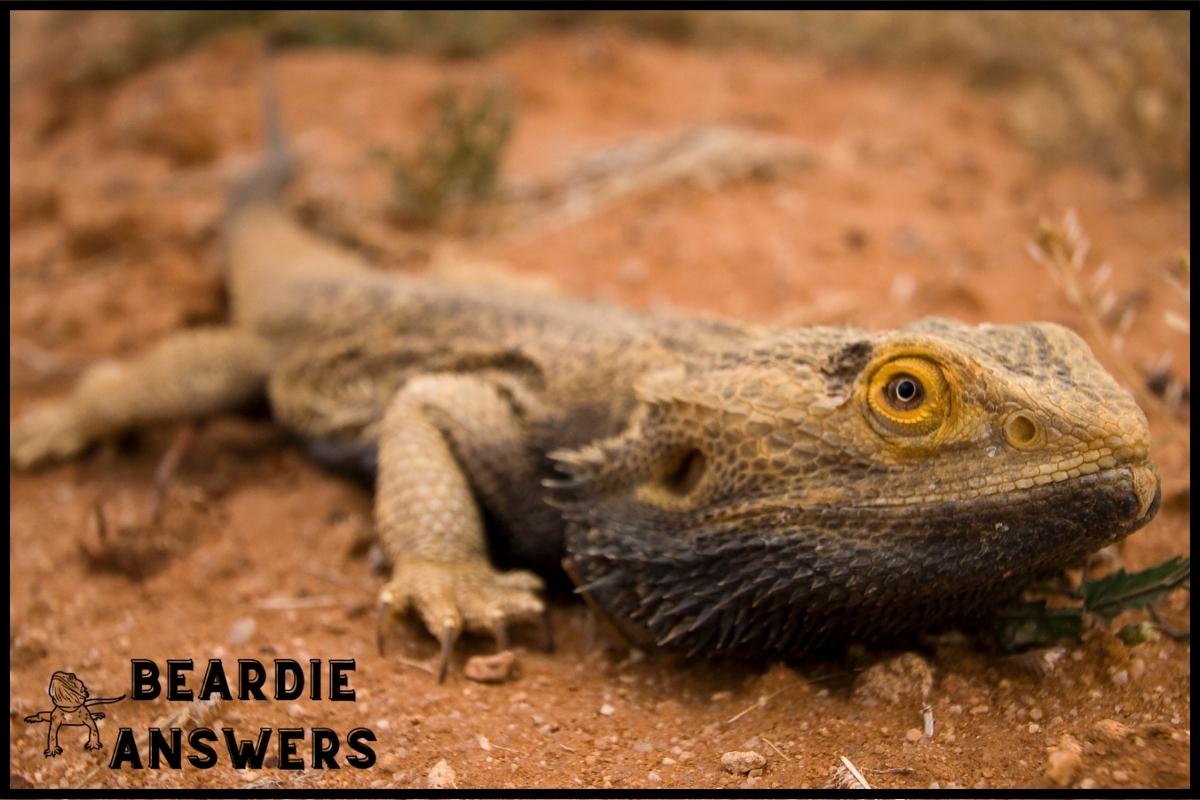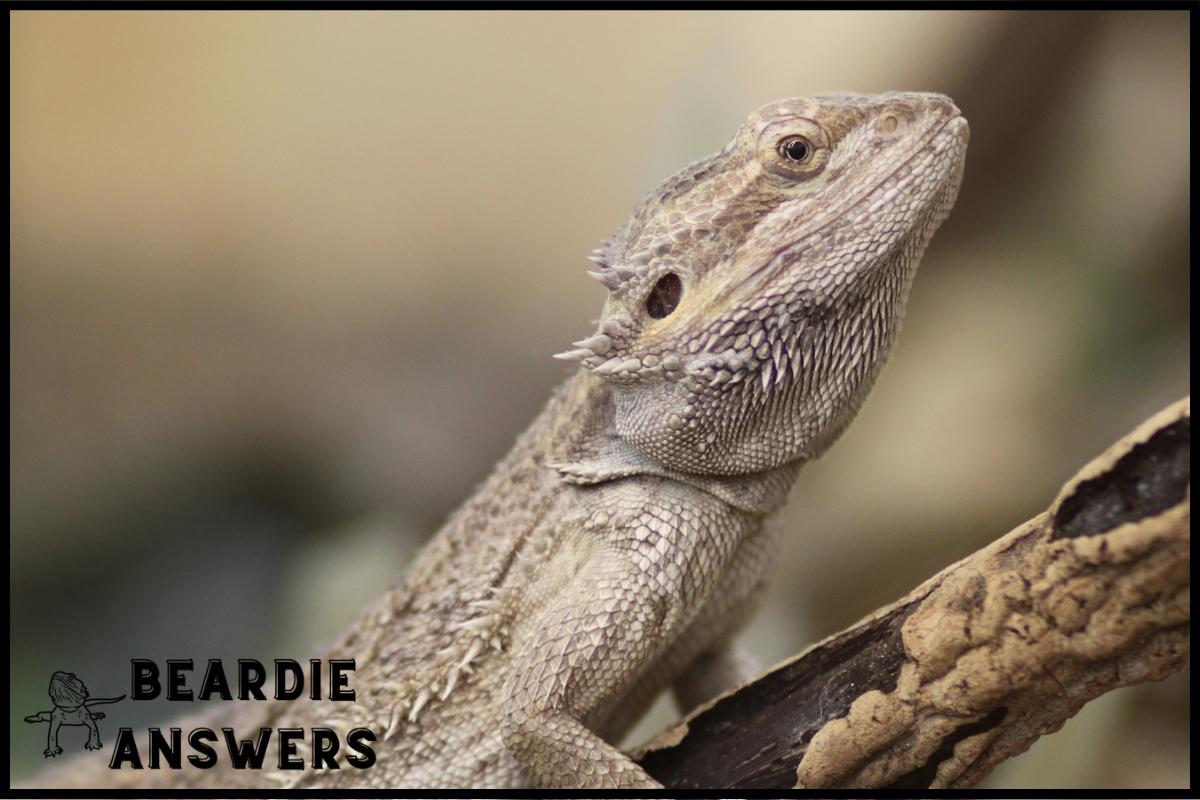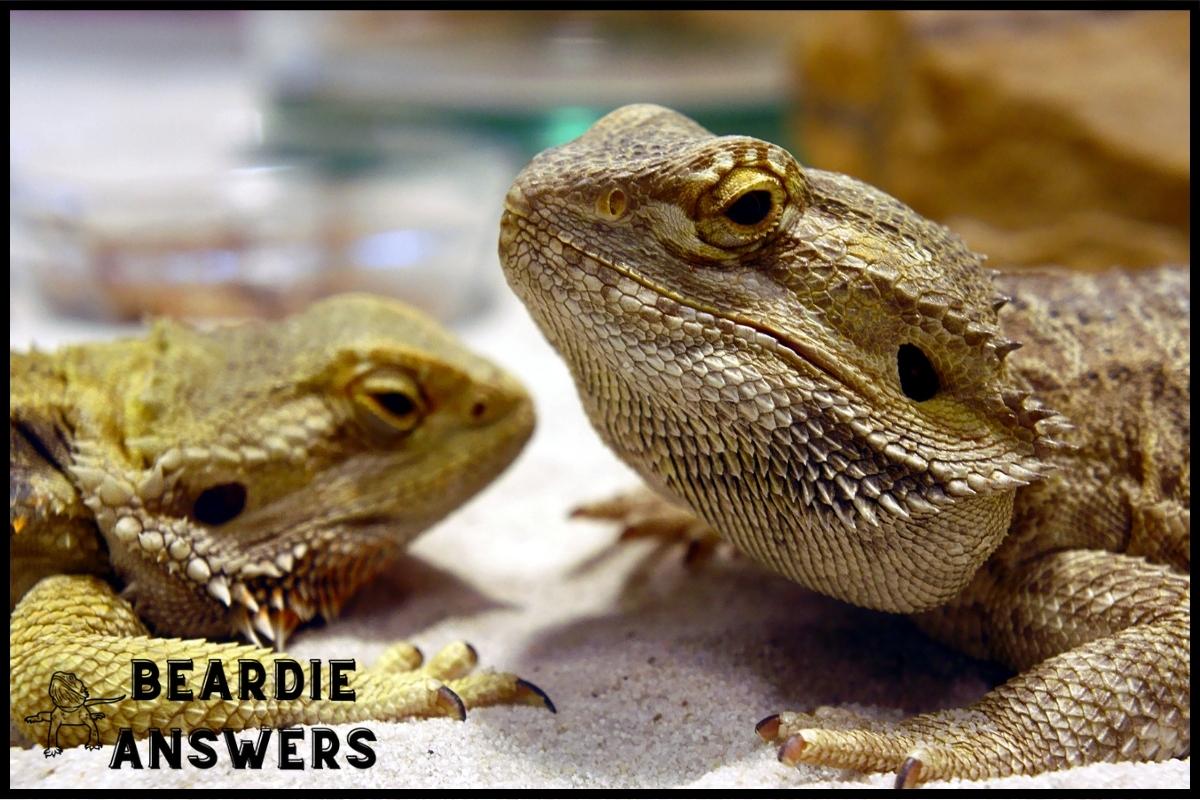Because bearded dragons tolerate handling better than other lizards, it’s generally safe to start handling them when they are two to three weeks old. Regular handling helps the bearded dragon become accustomed to people, so it is important to handle them correctly and consistently in order to establish trust.
In most cases, you can hold the bearded dragon for as long as it wants. If it exhibits signs of distress, such as sudden movements, hissing, puffing up, or tail flicking, it is time to return it to its enclosure.
What You'll Learn
When to Start Handling a Bearded Dragon
When it comes to handling bearded dragons, it is generally safe to begin as early as two to three weeks of age. However, before you begin handling your lizard, make sure it is healthy and at least six inches long. This ensures that your lizard is strong enough to be held for brief periods of time. Handling sessions should be brief at first, increasing in length as the lizard becomes more comfortable with being handled.
Reasons Why Bearded Dragons Might Not Let You Hold Them
[su_box title=”What You’ll Learn” box_color=”#5a5a5a”]
- Bearded dragons are generally tolerant of handling, but there are some reasons why they may refuse to be held.
- Stress or fear, pain, and being unaccustomed to being handled can all make your bearded dragon reluctant to be held.
- If your bearded dragon displays signs of stress or fear when you try to hold them, it’s best to give them some space and wait until they’re calm before trying again.
[/su_box]
Stress or Fear
One of the main reasons a bearded dragon may refuse to let you hold them is stress or fear. If a bearded dragon is handled for an extended period of time, it can develop stress lines, ovals, or spots on its body. Furthermore, if a bearded dragon has not bonded with their owner, they may become aggressive and refuse to be held. If your bearded dragon displays signs of fear or aggression when you attempt to pick them up, it is best to leave them alone and spend time near their cage so they can become accustomed to you.
In Pain
It is important to pay attention to your bearded dragon’s behavior because it can reveal a lot about their overall health and well-being. If you notice any signs of pain in your bearded dragon, such as lethargy, refusal to eat or drink, or unusual body postures, take them to a vet for evaluation. It is not recommended to hold a bearded dragon if they are in pain, as the added pressure may cause them additional discomfort. If your bearded dragon is in pain, provide them with a warm and comfortable environment away from stressors, as well as plenty of food and water. You can help reduce the likelihood of your bearded dragon being in pain by providing a safe and stress-free environment.
Not Used to Being Handled
When introducing your bearded dragon to handling for the first time, go slowly and steadily. Because your bearded dragon may not be accustomed to being held, begin by spending time near the cage and offering treats from your hand. This will help them become accustomed to you and understand that you are not a threat. We will talk more about how to introduce yourself to your bearded dragon in a moment. But if they aren’t letting you hold them, it could very well be that they are not used to being held.
How to Make Your Bearded Dragon Comfortable With Being Held
[su_box title=”What You’ll Learn” box_color=”#5a5a5a”]
- Making your bearded dragon feel at ease with being held is an important step toward developing a strong bond between the two of you.
- Begin by spending time near their cage to familiarize them with you and your presence.
- Give them treats from your hand to help them associate being touched with something positive.
- Pet them gently and gradually progress to lifting them with two hands.
- As some bearded dragons may not be comfortable with this at first, proceed slowly and carefully.
[/su_box]
Spend Time Near Their Cage So They Get Used to You
Spending time near the bearded dragon’s cage can help them become more comfortable with you. This acquaints the dragon with your scent and presence, and they will eventually learn that you are not a threat. It is important to be patient and allow the bearded dragon to approach you when it is ready, as forcing them to interact with you can cause fear and stress.
Offer Treats From Your Hand
Offering treats from your hand is an excellent way to get your bearded dragon used to being held. They will associate your presence with treats as they become accustomed to you, making them more likely to let you pick them up. Begin by offering them treats from outside their cage, then gradually bring them closer until they take the treats directly from your hand. Remember to be gentle and move slowly so as not to startle the bearded dragon.
Get Them Used to Being Touched By Gently Petting
Begin by petting their head and back gently with one hand, being careful not to startle them with sudden movements. This helps you and your dragon develop a trusting relationship as they become accustomed to the sensation of being petted. You can even try lifting the bearded dragon out of the enclosure with one hand while gently stroking their head and back with the other.
Most bearded dragons will eventually grow to enjoy being held or petted by their owners if they are given enough patience and consistent positive interactions. Remember that while some people may be able to get their pet bearded dragons used to being held in a few weeks, it may take up to 3 or 4 months for others.
Slowly Progress to Lifting the Bearded Dragon With Two Hands
When your bearded dragon has gotten used to being petted and touched, it’s time to start lifting them up. This should be done slowly and carefully, with the lizard supported by two hands. Make sure your hands are slightly cupped together, palms facing up, and that you are supporting the lizard’s entire body.
If you do everything correctly, your bearded dragon should feel safe and secure in your hands. When you take the bearded dragon out of its enclosure and into the air, it may begin to wave its arms or tail in a circular motion. This is a sign of pleasure, so continue to handle them until they become restless or attempt to flee.
Signs a Bearded Dragon No Longer Wants to Be Held
[su_box title=”What You’ll Learn” box_color=”#5a5a5a”]
- After you’ve taken the time to get your bearded dragon used to being held, there are some signs that it may no longer want to be held.
- Sudden movements, hissing and puffing up, and tail flicking are examples of these signs.
- If you notice any of these symptoms, stop handling the bearded dragon and return it to its enclosure.
- It is crucial to give your bearded dragon space when they need it and not force them into an uncomfortable situation.
[/su_box]
Sudden Movements
A bearded dragon can be stressed by sudden movements such as jerking or shaking. As previously stated, it is important to begin slowly and gently when handling your reptile companion for the first time. Always be aware of their mood and level of comfort, and avoid any sudden movements that might startle them. If your bearded dragon shows signs of stress or fear while you’re holding them, immediately return them to their enclosure.
Hissing and Puffing Up
One of the most common signs that a bearded dragon no longer wants to be held is hissing and puffing up their beard. When a bearded dragon is stressed or threatened, he or she may puff out their beards to appear larger and more intimidating.
This is frequently followed by hissing or tail flicking. It is crucial to take these signals seriously and return your dragon to its enclosure as soon as they begin to exhibit this behavior. If you ignore these warning signs and continue to hold them, they may become more agitated and overwhelmed, potentially causing serious injury to both you and your dragon.
Tail Flicking
Tail flicking can indicate that your dragon is preparing to do something, such as move or flee. If it twitches its tail quickly from side to side, it could be a sign that they no longer want to be held. If this occurs, it is essential to give them their space and ensure that they are comfortable being held before attempting to pick them up again.
[su_box title=”Things to Remember” box_color=”#5a5a5a”]
- Bearded dragons can be handled safely as early as 2-3 weeks old if they are healthy and at least 6 inches long.
- Handling sessions should be brief at first, gradually increasing in length as the lizard becomes more at ease.
- Stress, fear, pain, and not being used to being handled are all reasons why a bearded dragon may refuse to let you hold them.
- Spend time near your bearded dragon’s cage and offer treats from your hand to make them comfortable being held.
- Pet the lizard gradually and gently lift it up with two hands, as it may take weeks or months for the lizard to get used to being held.
[/su_box]

Hi! My name is Bryan, I am the “one behind the words” here are BeardieAnswers.com. I believe that providing quality care and nutrition is the best way to ensure the health of your pet. Every beardie is special and deserves the best care and attention. If you have questions about your bearded dragon, please don’t hesitate to ask! View My Full Author Page




